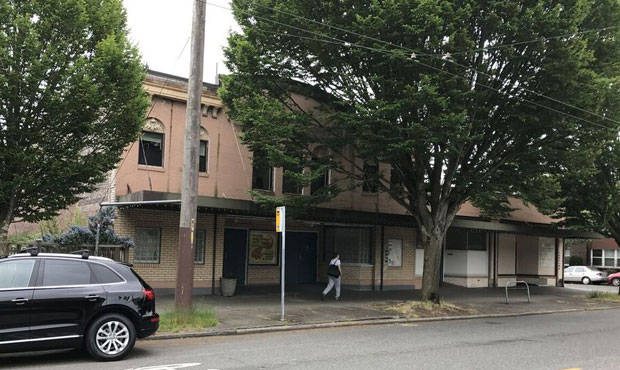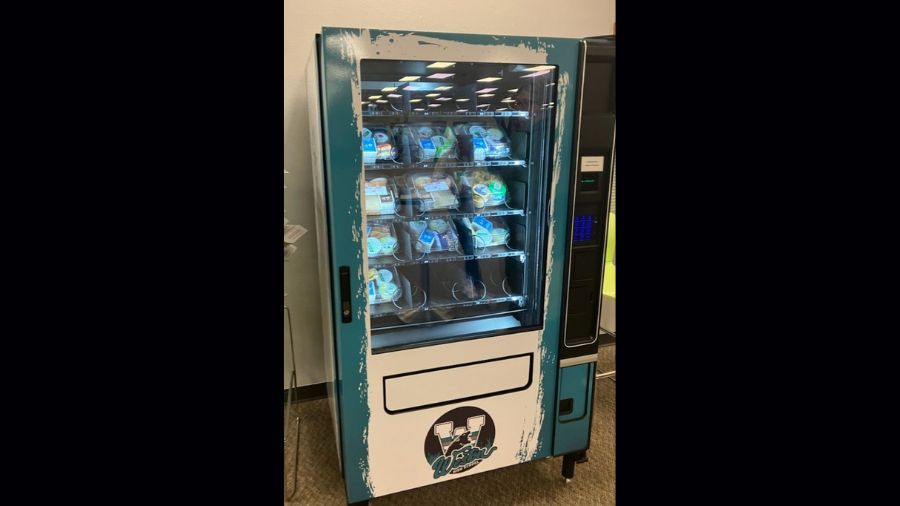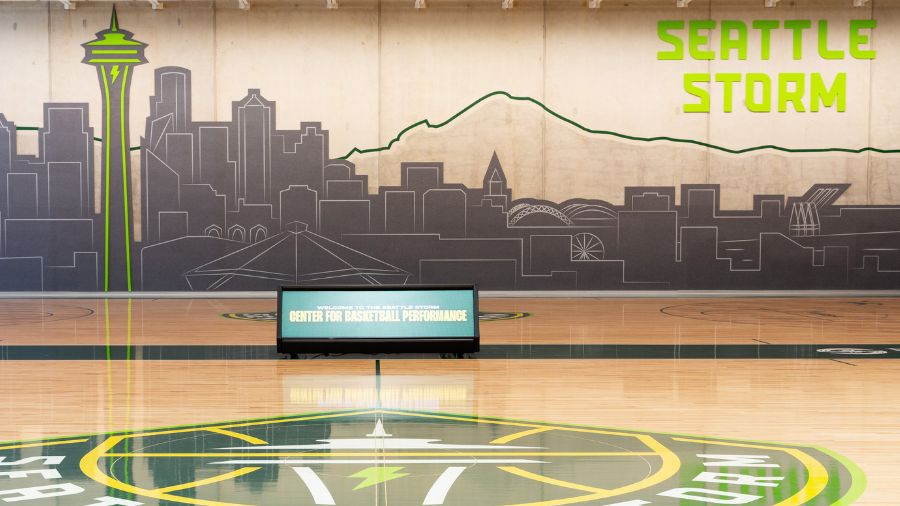Double feature: Second act for Seattle’s vanishing movie theaters
Jun 14, 2017, 5:46 AM | Updated: Jun 15, 2017, 6:44 am
When the Guild 45th and Seven Gables Theatre in Seattle abruptly shut down last week, rumors swirled about what might become of the two longtime local cinemas. Handbills about “renovation plans” posted in the windows by Landmark Theatres, the Los Angeles-based company that operates the venues, did little to reassure local film fans, and it remains to be seen what will happen next.
If the old theaters have indeed shown their last films, it could be that booming real estate prices and a growing population – along with radical changes in media consumption – have made the land more valuable for mixed-use development than for movies, and demolition is sure to follow. This is a cliffhanger that will have to wait for the next thrilling installment.
As it turns out, “The Mystery of the Vanishing Movie Theaters” is a franchise that’s had many reboots over the roughly 120 years that patrons have been enjoying motion pictures in and around Seattle. As for the earliest films here, sources point to the Third Avenue Theatre, near Madison Street, as home to some the city’s first cinematic entertainments, and by the early 20th century, downtown had multiple venues offering silent films.
In the 1920s, movie theaters (which were sometimes former vaudeville houses) popped up in almost every neighborhood in the city. They also appeared on the main streets of many smaller towns, and even in rural areas around Puget Sound. Movies were big business and a popular (and affordable) distraction throughout the 1920s, 1930s, and 1940s.
After World War II, the rise of television in the late 1940s and through the 1950s gets the blame for the first big wave of theater closures. Then, it was VCRs – along with cable channels like HBO – that were the culprits in the second wave of closures in the 1980s. This era also saw the construction of shopping mall multiplexes and brutal conversions of some stately old single screen theaters into two-screen cinemas.
Nowadays, with entire film libraries available to stream on smartphones and giant TVs, and real estate values climbing out of sight, it’s a wonder any movie theater still pencils out as a business model, especially those located outside of the urban core.
Drive-in theatres, with their acres of development-ready land, all but disappeared from the suburbs years ago to make way for strip malls and apartment buildings. But more recently, other once-vibrant boutique cinemas, even in the heart of movie-obsessed Seattle, have shut down and driven moviegoers to the mall or the urban multiplex.
There are exceptions, of course, such as the Admiral in West Seattle; the Crest (the only Landmark Theatre that remains open in the area) in Shoreline; and the Clyde in Langley and the Blue Fox Drive-In near Oak Harbor, both on Whidbey Island.
And while most of the theaters that did close in those first two waves are long since torn down, there are several that didn’t quite disappear completely. Some are still very easily identified, while other “phantom theaters” take a bit more hunting to track down.
Gateway Theatre in Kirkland
114 Central Way
The Gateway Theatre in Kirkland was built in 1926 on the site of an even earlier venue dating to the teens. The modern Gateway had retail spaces along the street, with the auditorium behind these storefronts and parallel to the sidewalk of Central Way. According to newspaper clippings, the theater was the site of a labor dispute in the 1930s that resulted in at least one tear-gas attack, and then a pair teenagers accidentally drove a stolen car through its wall in the 1950s. The last film was shown at The Gateway around 1958, and the building has been occupied over the years by a number of different businesses. It has been vacant for long stretches, especially in the 1980s. It’s currently a skin care clinic, and the only clue to the building’s original use are double exit doors at the east and west ends, and the high auditorium roofline visible from the west.
Cinemond Theatre in Redmond
Redmond Way
The Cinemond (also known as the “Mond”) Theatre in Redmond opened around 1970. In 1982, the Cinemond was the site of a suburban controversy when it was turned into a porno theater after it had been purchased by Roger Forbes. Porno didn’t really pan out in the Bicycle Capitol of the Northwest, and the Cinemond went back to showing regular movies before closing for good in the mid-1980s. The building is now a strip mall, with a dance and exercise studio in what used to be the theater auditorium. The Redmond Historical Society has posted a few vintage images of the Cinemond at their website.
Around the same time he bought the Cinemond, Forbes also purchased the Renton Theatre and Roxy Theatre in Renton. A city ordinance there prevented adult businesses within 1,000 feet of schools or places of worship, and a lawsuit, City of Renton v. Playtime Theatres, was eventually decided by the US Supreme Court. The court found in favor of the City of Renton, and the decision has stood for more than 30 years. Meanwhile, the availability of porn via other media – VCR, DVD and the Internet – has shuttered many an adult theater in the city and the suburbs.
Garden Theatre in downtown Seattle
1513 Third Avenue
Before expanding to the suburbs, Roger Forbes operated the old Garden Theatre on Third Avenue between Pike and Pine as a porno house from the early 1970s to at least the late 1970s. Since then, the space has housed a number of different retail stores but is currently vacant. A few of the architectural details remain on the 1920 building’s façade, and evidence of the old double-door exits are still visible in the alley in back.
Coliseum Theatre in downtown Seattle
5th and Pike Street
The Coliseum Theatre opened in 1916 and was one of Seattle’s grandest theaters, and one of the first to be built exclusively for motion pictures (that is, not also for live performance). It was converted to a Banana Republic in 1994 and remains a breathtaking specimen of theatre architecture, and a testament to its famous architect B. Marcus Priteca. You can probably also buy khaki pants there, if so inclined.
Broadway Theatre on Capitol Hill in Seattle
Broadway and John Street
The Broadway Theatre was a fixture on the corner of Broadway and John Street for decades (some accounts say it was built in 1930 on the site of an earlier theater). In 1990, the old local drugstore chain Pay n’ Save converted it to a store, but local activists successfully lobbied for retention of the old theater’s marquee. No prescription is necessary to enjoy this daily dose of vintage neon, though it’s best consumed at night.
Roycroft Theatre on Capitol Hill in Seattle
The Roycroft opened around 1920 on 19th Avenue East in Capitol Hill and was home to movies and live performances for most of the next 40 years. It was purchased in 1959 and became a gathering place for the Russian Community Center. The outlines of the letters of its original name are still visible in the upper portion of the theater’s façade.
Arabian Theatre Seattle
Aurora Avenue near Green Lake
The Arabian Theatre opened in the mid-1920s along Aurora Avenue. This was a few years before north-south thru-traffic would be re-routed to this neighborhood from Victory Way and before construction of the Aurora Bridge would further cement Aurora as the main drag north of Seattle via the Pacific Highway. Like the Gateway in Kirkland, the Arabian Theatre’s auditorium ran parallel to the street, with storefronts along the sidewalk. The Arabian was converted to a church in the 1950s, and is nowadays known as the Saint Germaine Foundation “I Am” Temple. Paul Dorpat and Jean Sherrard tracked down many excellent vintage photos of the theatre and the neighborhood for their Seattle Times column in 2012.
More About Old Theatres
Special thanks to Casey McNerthney at KIRO TV for the piece he wrote for the Seattle Post-Intelligencer, and to the website Seattle Theatre History for information about the city’s live performance venues.

























